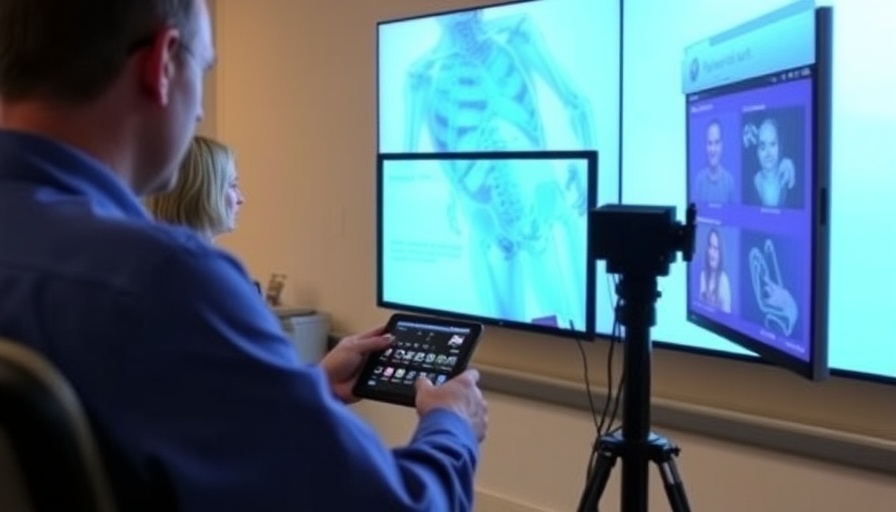
Unveiling Tele-Rehab: A Transformative Approach
As the healthcare landscape evolves, tele-rehabilitation emerges as a pivotal solution, particularly for patients recovering from knee replacement surgeries. The Hospital for Special Surgery (HSS) Florida in West Palm Beach has honed in on telehealth technology to enhance recovery outcomes and reduce costs significantly. Patients using this virtual care model typically recover faster and report lower pain levels, with an impressive $2,460 reduction in overall care costs compared to traditional rehabilitation methods.
Understanding the Traditional Recovery Landscape
Before diving into the benefits of tele-rehab, it's important to understand the conventional recovery protocol post-knee replacement. Dr. Spencer Summers, an attending physician at HSS Florida, notes the standard procedure involves patients first receiving physical therapy in the hospital followed by home sessions. Home nursing services are often contracted to send therapists to patients' homes two to three times a week. However, the inefficiencies of this approach have become evident.
Challenges Embedded in Conventional Methods
While the initial sessions are beneficial, arranging for physical therapists to visit homes can pose logistical challenges, particularly in areas where therapists are scarce. Furthermore, the short duration of therapy sessions leaves patients on their own during the remaining days of the week. Many patients arrive for follow-ups with stiffness in their knees, prompting anxiety and frustration during clinic visits.
Revolutionary Shift: Embracing Tele-Rehabilitation
HSS Florida's transition to telehealth services through ROMTech addresses these challenges. By utilizing a structured, virtual rehabilitation program, patients can engage in their recovery without the constraints of traditional physical therapy schedules. This shift not only alleviates geographical barriers but also provides continuous monitoring and support, elevating patient engagement and improving outcomes.
The Data Speaks: Monitoring Results
Tele-rehabilitation has proven its efficiency through data. Patients involved in the program demonstrate quicker recovery timelines, enhanced range of motion, and reduced pain rates. These improvements translate directly into a better quality of life and a smoother return to daily activities. Moreover, the financial savings associated with telehealth cannot be ignored. The substantial reduction in overall care costs presents a compelling case for healthcare providers to consider virtual care options seriously.
Holistic Benefits Beyond Cost
The advantages of tele-rehab extend beyond financial savings. Patients frequently report higher satisfaction levels as they can receive personalized care directly within their environments. This modality encourages better compliance with rehabilitation exercises due to the continuous support and motivation provided by healthcare professionals, significantly contrasting the discomfort many feel during in-person sessions.
Comparative Perspectives from Other Institutions
While HSS Florida is not alone in this venture, other hospitals and rehabilitation centers across the country are witnessing similar successes with tele-rehabilitation. Institutions are increasingly adopting virtual solutions to enhance recovery post-surgery. These innovations align with a growing trend toward integrated healthcare solutions that marry technology with patient care, indicating a paradigm shift in how recovery is approached within the healthcare sector.
Final Thoughts: The Road Ahead for Tele-Rehabilitation
The future of tele-rehabilitation looks promising as more institutions embrace this modal of care. As we witness advancements in technology, there will likely be even more effective ways to integrate virtual health solutions into traditional recovery frameworks. For healthcare professionals, adapting to this new landscape means not only improving patient outcomes but also potentially reshaping industry standards.
In a rapidly evolving healthcare environment, keeping pace with these changes is crucial. For CEOs, marketing managers, and professionals focused on health tech, engaging with the tele-rehab landscape isn’t just beneficial; it’s essential for staying ahead of industry trends and improving patient care outcomes.
 Add Row
Add Row  Add
Add 




 Add Row
Add Row  Add
Add 

Write A Comment